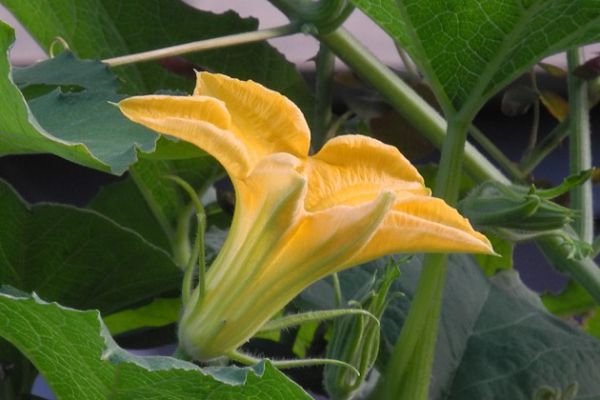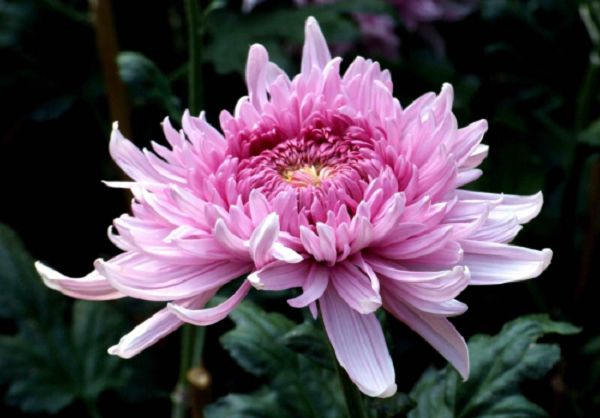Application of hydroponic Culture in greenhouse Flowers
Soilless cultivation means that the cultivation of garden plants does not use soil, but uses water, sand, slag, sawdust and vermiculite instead of soil as the growth substrate, and inorganic fertilizers as a suitable aqueous solution as the source of plant nutrition. Because there is no soil, there are no advantages and disadvantages of soil cultivation. On the contrary, it has the advantages of high yield, good quality, less diseases and insect pests, light pollution, labor saving, fertilizer saving and so on. At the same time, soilless cultivation does not choose the height of topography, which can make full use of space, especially suitable for the application of family horticulture. And soilless cultivation of garden plants, large flowers, colorful, thick green leaves, flowering; can avoid the spread of soil diseases and insect pests; do not apply organic fertilizer, but the application of inorganic fertilizer, odorless, clean and hygienic. Recent data show that the food cultivated in soilless culture per m2 can feed one person for one year. Thus it can be seen that soilless cultivation can be used for a long time at present and for a period of time in the future. in the case of large population and little land in our country, it is worthy of long-term research and discussion. (see Table 1)
'
There are many methods of soilless culture, which are different in the use of substrate, the preparation and supply of nutrient solution, and the control and regulation of environmental factors, which are generally divided into three forms: hydroponic culture, substrate culture (solid culture) and air culture. At present, air culture is mainly used for the study of plant roots and plant reproduction, while hydroponic culture and substrate culture are widely used in the production of flowers, vegetables, melons and fruits and the export of bonsai. Hydroponic culture and substrate culture are more or less the same, both are to prepare nutrient solution. Fixed plant materials are different, the use of containers are also different. The concentration of nutrient solution prepared by hydroponic culture is lower, while that of substrate culture is slightly higher. Generally speaking, the lower concentration of hydroponic culture is beneficial to the growth of plants, as long as the plant does not appear element deficiency, do not increase the concentration of nutrient solution. when the formula of nutrient solution needed by plants can not be mastered, the selection of substrate culture is easy to be successful. The author briefly talks about the application of hydroponics in greenhouse flowers.
1 the process and reaction of hydroponics
1.1 preparation of materials
① plant materials: chrysanthemum, cold water, Chrysanthemum, foxtail flower, shackle yew (dwarf yew), kidney fern 2 each. ② containers: 6 250rnJ beakers, 6 wide-mouth glasses or canned fruit bottles, wash and disinfect. ③ fixing material: Styrofoam (polystyrene board). ④ inert material: nutrient solution.
1.2 steps for hydroponics
(1) ground or potted flowers, wash the soil from the roots, then disinfect and cool the roots with 25% carbendazim 800x solution, then put the plant in a container, cut it into a bottle with polystyrene board, make a small opening in the middle of the plastic plate (or will be cut in half, a small opening in the middle), fix the plant, according to the plant size, slightly refine part of the root system, add water to the bottle mouth 3cm. Put the plant in the same container, put it in a shady place appropriately, and adapt to it for a period of time, according to the different characteristics of the plant. Place the shade-tolerant plant below. Light-loving plants are placed on top so that plants can see a little visible light, which should be carried out according to the adaptation of plants, usually 20-30 days (daffodils don't take so long).
(2) prepare nutrient solution. Because plants need about 34 elements, 16 are the main elements. The concentration of a large number of elements is several parts of dry, the concentration of trace elements is a few ten thousandths, a large number of elements are carbon, hydrogen, nitrogen, phosphorus, potassium, calcium, magnesium, sulfur and so on; trace elements are molybdenum, iron, zinc, manganese, boron and so on. The prepared fertilizers are all inorganic fertilizers, which can be dissolved in water and are easily absorbed by plants. There can be no impurities in water. There can be no polluted water. The pH of the nutrient solution is generally between 5.5 and 7, with partial acid adding sodium hydroxide and partial alkali adding dilute hydrochloric acid. There are many formulations for nutrient solutions. according to the reagents currently available in the chemical reagent store, select the following formula (see table below).
(3) after the adaptation period, replenish the nutrient solution. According to the different concentration, the supplementary nutrient solution was added more than 20 ℃, and the growth period was about 10-20 days. 20 ℃ below 20 days / time. When placed for a long time, change the nutrient solution about once every 2 months, pour out all the nutrient solution and add a new one. Usually only replenish the nutrient solution to pour the cup, to maintain a certain scale, do not exceed the scale, affecting growth.
(4) during the period of adaptation, some varieties could not have long-term root system in water. Among the above varieties, foxtail flower was most obvious at the root tip and white floc appeared around the root. This white floc has been inhibiting growth: when the cold water is in water for 10 ℃, white roots appear in 10 days. Chrysanthemum appears white new roots in 12 days, Jinxin orchid, dwarf yew. Kidney fern has no new roots. After the adaptation period, if the water is changed into nutrient solution, the growth is normal when the greenhouse temperature is above 5 ℃ in winter. When the water is lower than 0 ℃, the water will freeze, which will cause the root system of the plant to be frozen and cause the whole plant to die.
2 Experimental analysis
In the course of the experiment, it was also found that some flower varieties are not suitable for hydroponic culture: suitable for substrate culture. substrate culture can control water requirements. Hydroponic nutrient solution formula is more. Different varieties need different nutrients. The growth period can increase the effective concentration of the nutrient solution, on the one hand, it can supplement enough nutrients, on the other hand, it can promote the differentiation of organs. The dormant period can adapt to reduce the effective concentration of nutrient solution. Generally speaking, as long as the plant, there are no symptoms of lack of nerves. Do not increase the nutrient concentration of the nutrient solution. The requirements of various nutrient elements are different in different stages of plant growth and development and different climatic conditions. The supply of potassium should be increased in late autumn and early winter and in cloudy seasons. Because among the many recipes. It's hard to find an ideal formula. The author thinks that water culture is the development trend in the future. Easy to manage. Save it. Save time, occupy a small area, do not pollute the environment, use some empty bottles. Empty utensils without drainage holes are planted. For different varieties. the required nutrient solution concentration is different, correctly grasp the use concentration. It needs to be practiced for a long time.
Related
- What if the leaves of potted flowers turn yellow?
- Florescence Control of several Flowers
- Anti-freezing technology and post-freezing nursing technology of flowers
- What is the classification of flowers? What are the common methods of flower classification?
- Prevention and control of alkali and acid damage of flowers in courtyard
- Technology of Anti-freezing and restoring growth of Flower seedlings in greenhouse and greenhouse
- How does flower fertilization not hurt the root? Fertilization technology of flowers
- Key points of disinfection in flower greenhouse
- Several pesticides that are banned or used cautiously in flowers
- How to fertilize the flowers that watch the leaves?



